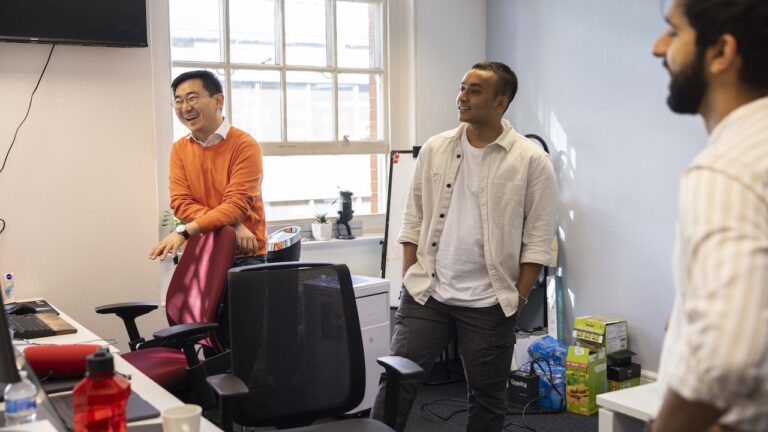Neuphonic, a British startup redefining human-AI communication with the world’s fastest text-to-speech technology, has raised £3 million in pre-seed funding. The round was led by Moonfire VC, one of the top 10 data-driven VCs in the world based on the percentage of engineers on its team, with participation from Tiny VC, Salica Oryx Fund, and Cur8 Capital.
Until now, the potential of conversational AI has been hampered by major technical limitations. Text-to-speech models are too large, slow, expensive, and sound unnatural. Neuphonic changes this. Patent-pending algorithms enable real-time incremental speech generation with ultra-low latency of just 25ms, making it the world’s fastest text-to-speech solution. This incremental approach allows Neuphonic to work with any large-scale language model in a more human-like and language-independent way. Neuphonic’s API is available to customers who want to create human-like voices in their products through an exclusive closed beta program.
“Long latency in voice AI prevents natural interactions and slows growth in key areas such as gaming, conversational AI, digital avatars, and real-time translation,” said Sohaib Ahmad, co-founder and CEO of Nuphonic. states. “As a result, people struggle to actually interact with voice AI. We’ve reached a stage where AI feels like a natural extension of ourselves – intuitive and easy. Ideally, people would spend less time staring at screens and more time actually communicating.”
Neuphonic was founded by former Papercup co-founder Jiameng Gao and former hedge fund quantitative trader Sohaib Ahmad. The two met while studying machine learning at Cambridge University. As multilingual first-generation immigrants with roots in China, Ireland, and Pakistan, Sohaib and Jiamen have unique insights into language barriers and cultural nuances that lead them to voice technology. In parallel with my passion for music, I developed Newphonic and used it as an opportunity to solve problems. Issues facing existing text-to-speech solutions.
“Producing speech word-for-word as text arrives enables a wide range of use cases for Text-To-Speech that were not possible before. It is now being used in customer service, digital reception, humanoid robotics, and more. , edtech, storytelling, and content creation will allow us to go beyond speed and create AI interactions that are as natural and responsive as human conversations.” added Jiameng Gao, CEO and CTO. “Just as people speak instantly, our model avoids the need for complete sentences and in doing so significantly reduces latency.”
Akshat Goenka, partner at Moonfire, said: “Voice AI is a sleeping giant, held back by the technological limitations that Neuphonic is currently solving.The technology has significant value across multiple industries. We have the potential to do more in terms of customer service.” For content creators, Neuphonic’s solutions can be a catalyst for innovation in emerging areas such as digital avatars and AI games. It could be applied in these and other fields, and ultimately enable entirely new business models and user experiences that were not possible before. ”
“Neuphonic’s breakthrough in real-time speech synthesis will spark a paradigm shift in human-machine interaction,” said Professor Steve Young CBE, Emeritus Professor of Information Engineering and former Senior Vice-Chancellor of the University of Cambridge. I am. “Reducing latency to near-human levels paves the way for seamless voice interactions to replace screens in many aspects of daily life.” Advisor and investor in Nuphonic’s current funding. Professor Young emphasized that the company has the potential to redefine the future of voice technology.
Newphonic, headquartered in King’s Cross, London, plans to use the funding to expand its language capabilities and voice services, expand its research to improve the performance of its models, and develop on-device solutions. With a growing team and a waiting list of hundreds of potential users and companies, the company is positioned for rapid growth in the voice AI market expected to reach US$41.39 billion by 2030. there is.


